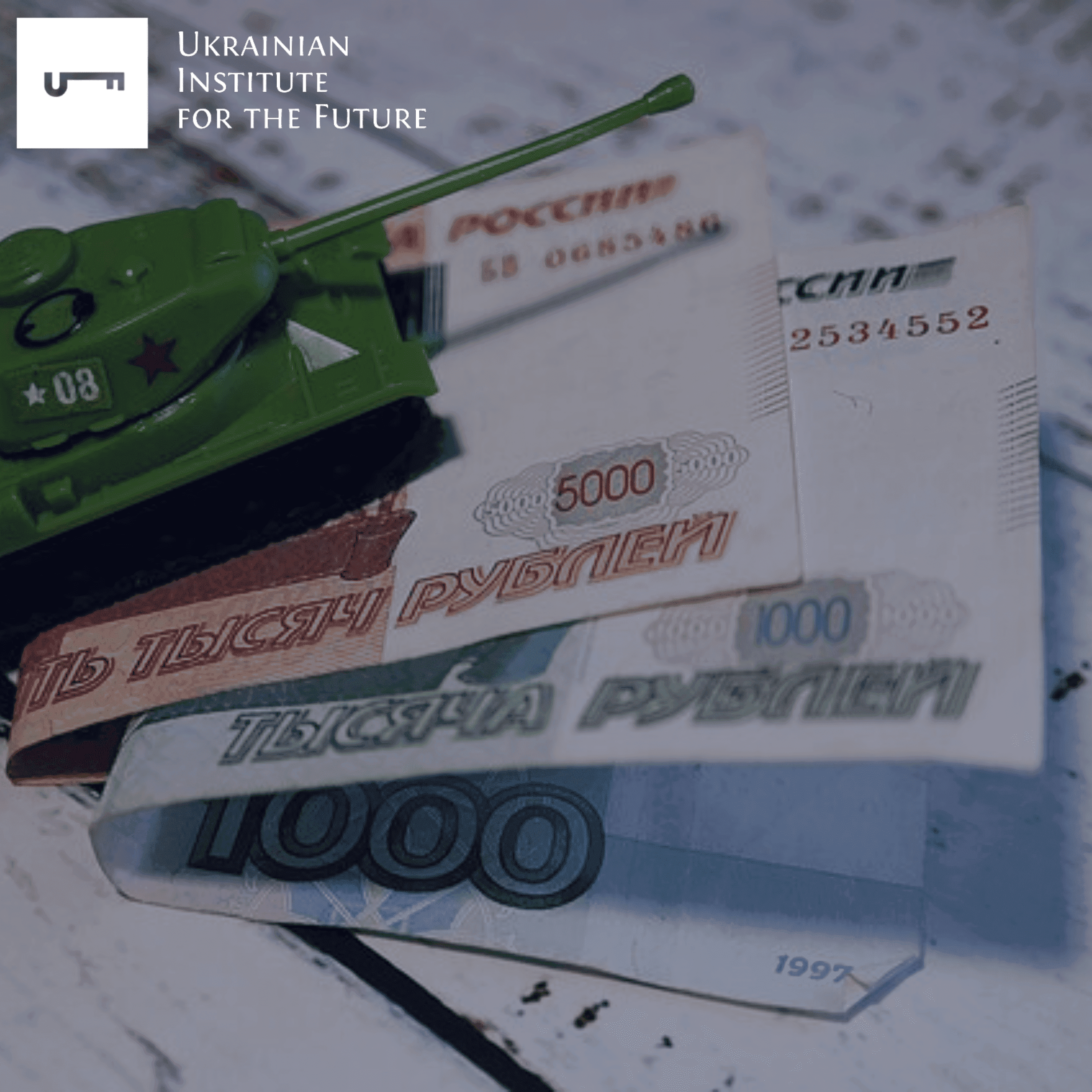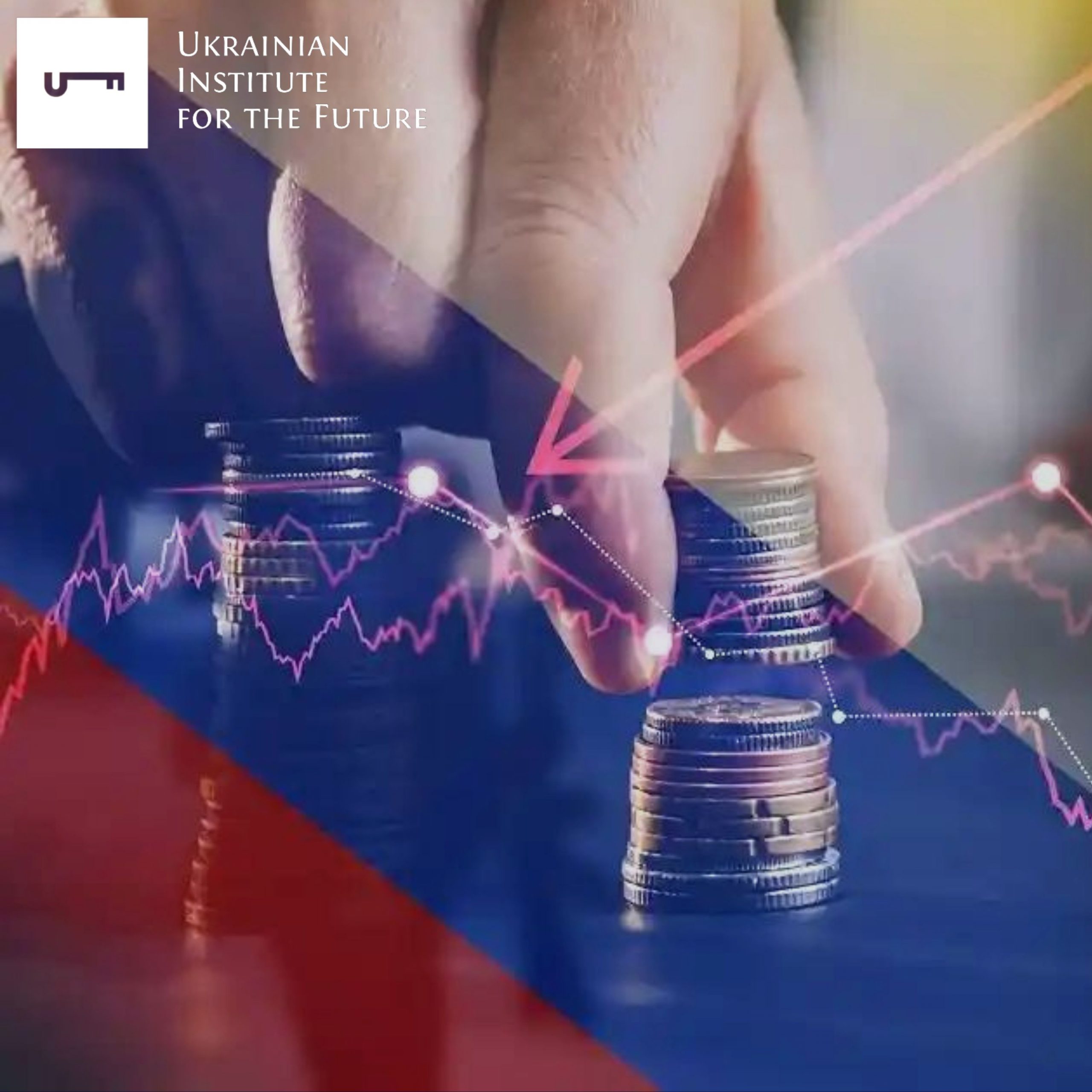Where may Russia find resources to cover the deficit? From the experience of 2022, the most likely source seems to be the National Welfare Fund (NWF), where excess profits from energy exports had been accumulated earlier.
As on February 1, 2023 the liquid part of the NWF amounted to 6.3 trillion rubles.
Does it mean that the fund’s money may run out by the end of this year or at the beginning of 2024?
In early February, the RF Ministry of Finance published the federal budget data for January: total revenues have gone down by 35% or 733 billion rubles compared to January 2022, including oil and gas by 370 billion rubles and non-oil and gas by 363 billion rubles.
With oil and gas revenues the reason is clear – the price of Urals crude oil, which is an export price indicator for Russian oil, in January 2023, was 29% lower than budgeted ($ 49.5 / bar. versus $ 70 / bar.).
This is the highest budget risk area for the Russian Federation in 2023. If the oil price is lower than the Ministry of Economy forecast of $70 per barrel, it may occur for a number of reasons:
a) the aftermath of the price ceiling, imposed by the Western sanctions
b) the world economy recession, drop in demand and, as a consequence, lower oil prices,
c) the combination of both these factors,
then the oil and gas budget revenues may come to be significantly lower than it was planned by the Ministry of Finance.
If we assume that the average annual cost of Russian oil stays at $ 50, then instead of the planned 9 trillion rubles, the Ministry of Finance will receive only 6 trillion rubles, meaning that the budget deficit may amount not to 3 but to 6 trillion rubles. Let’s leave it at thas for now and come back to this issue a little later.
Returning to the January statistics – the decline in non-oil and gas revenues, which are more indicative in assessing the internal state of the Russian economy, the Ministry of Finance explained them by the changes in the procedure for VAT refunds, which allegedly did not exist in January 2022, and the income tax reimbursement of overpayments for the previous periods
that had to be done . In other words, it can be assumed that the situation here may even out in the coming months, as indicated by the wording of the Ministry of Finance “in general, the volume of non-oil and gas revenues at the end of January 2023 is consistent with the dynamics predicted during the formation of the budget law (No. 466-FZ of December 05, 2022).”
Therefore, we shall closely observe the dynamics of the forthcoming months.
Budget expenditures in January increased by 59% or 1,153 billion rubles, compared to January a year earlier. The deficit amounted to 1.76 trillion rubles against a surplus of 0.125 trillion rubles in January 2022.
Conclusions :
It seems premature to draw conclusions and estimates only based on the data of one month, as, in fact, to talk about some impending collapse of the budget system of the Russian Federation.
One thing can be said with certainty – the trend for Russia remains negative:
– In 2022, Russia became the beneficiary of the energy crisis and high energy prices. But the main profits were received in the first half of 2022, when the Ministry of Finance managed to get a budget surplus of 1.5 trillion rubles and create a safety net. In the second half of the year, the budget deficit had already amounted to 4.8 trillion rubles.
– In December 2022, when the oil sanctions began to take effect, the oil budget revenues fell by a third. Expenses in December increased by more than 2 trillion rubles, in excess of what had been planned.
What other factors may negatively affect the RF budget in 2023:
Lower than budgeted oil prices ( see above). The probability of this factor is quite high, considering the fact that the West has chosen a tactic – not to limit the physical volume of Russian oil supplies to the world market, but to limit its cost and, accordingly, the income of the Russian Federation. If you simply prohibit the supply of Russian oil, then a sharp drop of such a volume from the market (before the sanctions, Russia supplied about 5 –7.5 million barrels / day, and as of the end of January – 3.6 million barrels / day), will inevitably lead to a rapid growth of prices, and the Russian Federation, one way or another, continuing to supply the world market, will only benefit from high prices.
An increase in military expenditure is also quite likely, due to the fact that the war has evolved into an attrition stage.
Weaker economic growth than previously budgeted. It is still quite difficult to make estimates here, we need to see how Russia adapts to petroleum products sanctions. So far, there is information that some Russian refineries are being shut down for scheduled repairs (this is from 2 weeks to 1.5-2 months of downtime and an expected reduction in annual production of up to 15%). Of course, there are many factors that can affect the economy in either direction. Back in March 2022, experts and the RF official authorities predicted a drop in GDP by 7-15%, but in fact the reduction was only 2.2% (preliminary estimate). Almost everyone had made a mistake, underestimating the adaptability of the economy (sanctions had been introduced gradually and not for everyone at once).
On the other hand, there are the so–called budget support factors to consider:
• the growth of the mineral extraction tax, an increase in the income tax for exporters of liquefied gas (although it has already been included into the budget – the straw that the Ministry of Finance has farsightedly laid for itself)
• expected reduction in payments to refineries
• inflation and devaluation of the ruble. This year, the current account surplus is expected to decrease at least twofold compared to $227 billion in 2022 (again, following the decline in oil and gas export revenues and a gradual recovery of imports). In general, the probability of a moderate devaluation – up to 80-90 rubles per dollar – is quite high, given that it will be beneficial to both exporters and the budget. In 2022, after all, high energy prices (especially in the first half of the year) allowed the Central Bank to shift its priority to stabilizing the foreign exchange market and price stabilization (restraining price growth).
Taking into account all the above factors, and especially the oil price factor, it can be assumed that the budget deficit in 2023 may rise up to 5-6 trillion rubles, which will be equivalent to 3-4% of GDP. The figure is not really critical. The question here is what will happen with the NWF, the liquid part of which is estimated at 6.3 trillion rubles (as for February 1, 2023).
Let’s see how the budget deficit was covered in 2022 (3.3 trillion rubles):
2 trillion rubles was covered from the NWF, and from its illiquid part (the foreign currency part, that is now frozen). It means that an emission was in fact carried out.
placement of federal loan bonds (OFZ). For reference: the total volume of securities placed in 2022 amounted to 3.3 trillion rubles, which was a quarter more than in 2021.
Thus, in 2023, if necessary, a “printing press” can be turned on at any time to finance payments in rubles, and in this case the NWF money, even considering that some national projects are directly financed from it (0.5-1.9 trillion rubles in 2023) would be enough for both the 2023, and the 2024.
And again, these are possible developments of the situation, providing there would be no “collapse” scenario, followed by a global crisis and a collapse of commodity prices, including oil prices (not a controlled soft landing of the economies of developed countries, as it is happening now, but rather a crisis like in 2008-2009.)
This step has one obvious disadvantage for the Russian Federation – the inflation, that will eat up incomes and savings (and therefore a source for investment) and ultimately lead to even greater impoverishment of the population.
It is most likely that the Central Bank would resist excessive emission, realizing the seriousness of all risks, but many administrative decisions in the RF are made unilaterally, so this scenario, together with a moderate devaluation of the ruble, seems to us the most likely.




